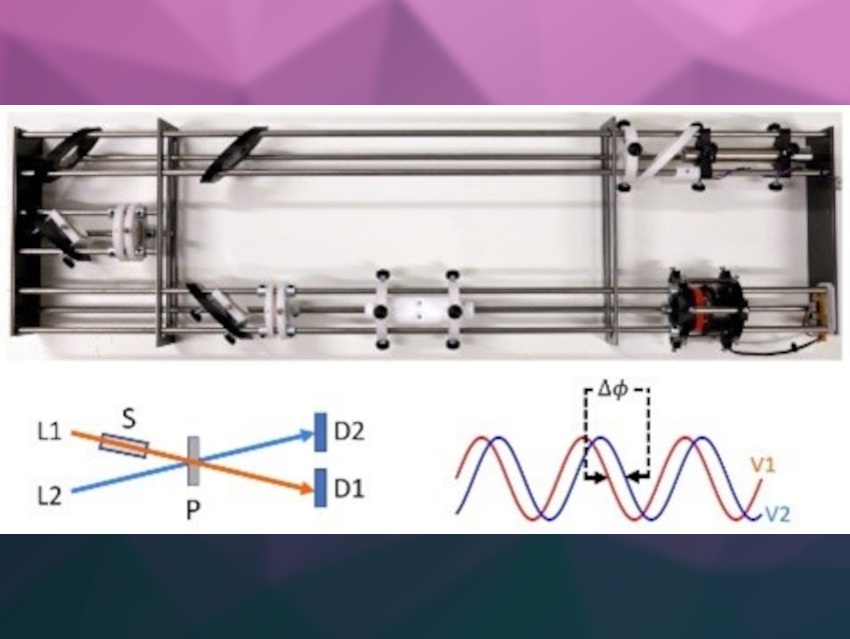The high cost of instrumentation can be a barrier to building a successful research lab. Self-built instrumentation is a possible alternative, but can be a daunting task for those without access to specialist workshops. In recent years, the growth of so-called “open hardware” projects, which provide design files and source code on a royalty-free basis, has made self-built equipment a viable alternative to expensive commercial instruments.
John C. de Mello and Andrew J. Harvie, Norwegian University of Science and Technology (NTNU), Trondheim, have developed an open polarimeter called Opol (pictured at the top), an inexpensive device that can be built in under two days for around USD 250 by anyone with access to a 3D printer and a benchtop milling machine. The polarimeter uses phase-based measurement techniques, which removes the need for expensive moving parts found in instruments using angular methods.
In this technique, a laser beam is split into sample and reference beams (pictured bottom left). The reference beam (L2) passes through a fixed polarizer and a rotating polarizer (P), and the sample beam (L1) passes through another fixed polarizer, an optical cell containing the sample, and the same rotating polarizer, all before striking two photodetectors (D1 and D2). The phase difference between the two beams (pictured bottom right) can then be used to calculate the optical rotation angle of the analyte.
The researchers demonstrated the principle by measuring the optical rotation of D-sucrose in water and achieved 3‐millidegree accuracy. The device opens up the essential analytical technique of polarimetry to a wider variety of researchers who might not be able to afford a much more expensive commercial instrument. The team suggests that the mounting design could also be a basis for other kinds of optical instrumentation.
- The Open Polarimeter: A High‐Resolution Instrument Made from Inexpensive Optomechanical Parts,
Andrew J. Harvie, John C. Mello,
Chem. Methods 2021.
https://doi.org/10.1002/cmtd.202000057




